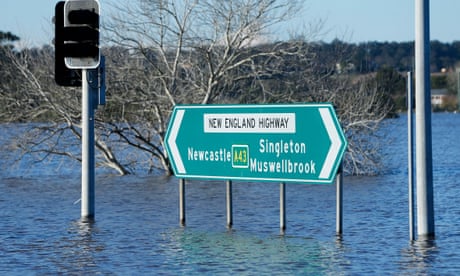- by foxnews
- 23 May 2025
Trillions of dollars at risk because central banks’ climate models not up to scratch
Trillions of dollars at risk because central banks’ climate models not up to scratch
- by theguardian
- 10 Aug 2022
- in news

Trillions of dollars may be misallocated to deal with the wrong climate threats around the world because the models used by central banks and regulators aren't fit for purpose, a leading Australian climate researcher says.Prof Andy Pitman, director of the Australian Research Council's Centre of Excellence for Climate Extremes, said regulators were relying on models that are good at forecasting how average climates will change as the planet warms, but were less likely to be of use for predicting how extreme weather will imperil individual localities such as cities.
The concerns, detailed in a report in the journal Environmental Research: Climate, were underscored by the Australian Prudential Regulation Authority's release on Monday of its corporate plan 2022-23. Apra plans to "continue to ensure regulated institutions are well-prepared for the risks and opportunities presented by climate change".
But Pitman said regulators were still ill-equipped to assess the risks and to regulate the ability of banks and other institutions to cope with them.
"Without a shadow of a doubt, we're overestimating the cost of climate change in some areas and grossly underestimating it in others," Pitman said. "We need to take this issue seriously - not just access information flying around and think we can package it to do proper economic assessments."
"If you're going to throw billions or trillions of dollars around, you need to ensure that you're getting the right scientific advice on how to interpret the climate information," he said. "I think that's a no-brainer but [regulators] are not doing that."
Pitman's paper, and a separate one he co-authored for Nature Climate Change in 2021, examined the models being used by groups such as the Network for Greening the Financial System. The NGFS advises about 100 central banks and other regulators globally, including Australia's Reserve Bank and Apra.
The climate models underpinning such advice, however, are based on general climate change, such as rising temperatures. In part because their resolution typically covers only 100km-by-100km regions, the models' coarseness makes them unreliable for predicting how extreme weather events will change, Pitman said.
Without their own climate scientists, the RBA and Apra rely on scenarios generated by NGFS to understand how a heating planet will influence economic and financial stability.
The RBA referred queries to Apra, where a spokesperson said: "Apra's focus is not on specifying individual climate risks for different regulated entities but rather on ensuring that entities are making lending, investing and underwriting decisions based on a full understanding of the relevant risks, including climate risks."
"We do not evaluate risks on behalf of the entities that we regulate," the spokesperson said.
Apra recently released the results of a self-assessment survey on members' approach to those risks. It is also now completing its inaugural climate vulnerability assessment of the five major banks.
Pitman, who had contributed to the soon-to-be-released inquiry into the NSW floods earlier this year, said the standard approach must avoid being complacent about the possible changes that may not be well understood.
For instance, people should not build on flood plains even if the trend of future climates might result in some regions receiving fewer multi-day rain events but more short-term, intense ones.
Decisions needed to be "framed in a deep understanding of uncertainty and chosen very carefully to do no harm" and include greater investment in the science, Pitman said.
He said Apra's corporate plan implied "we can do this well and we'll continue to do it well, and I think that's courageous".
For instance, it was clear the flood-prone Hawkesbury River near Sydney would flood "again and again and again", Pitman said.
"You don't need climate projections to say there's a vulnerability there," he said. "Go and look for where there's vulnerabilities in supply chains, or in the planning for those most at risk, and invest in those because you're on very sure ground that those risks aren't going away."
- by foxnews
- descember 09, 2016
United Airlines flight returns to Hawaii after concerning message found on bathroom mirror; FBI investigating
United Airlines Flight 1169 to Los Angeles returned to Hawaii after a "potential security concern" aboard the plane. The FBI and police are investigating.
read more


